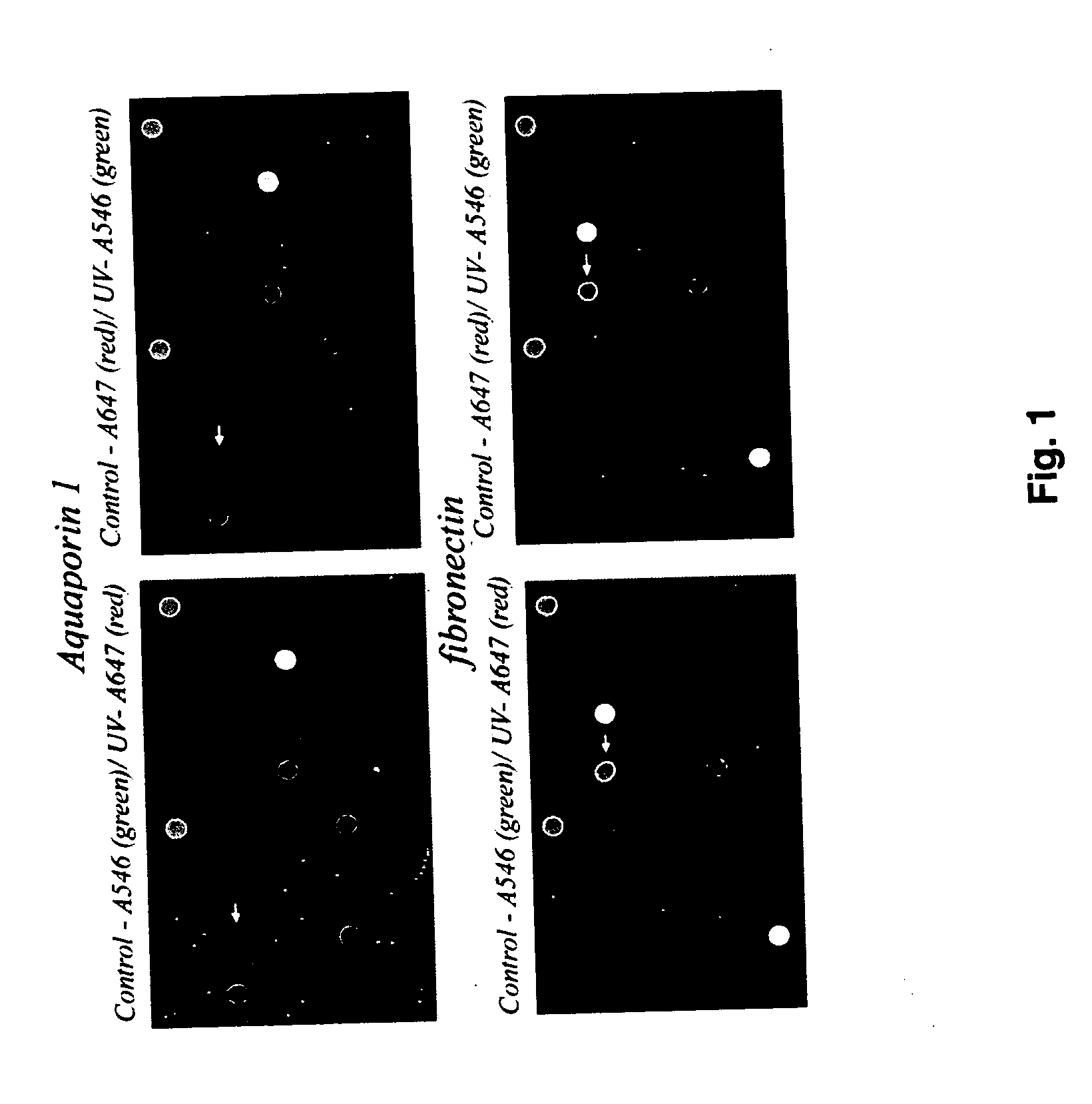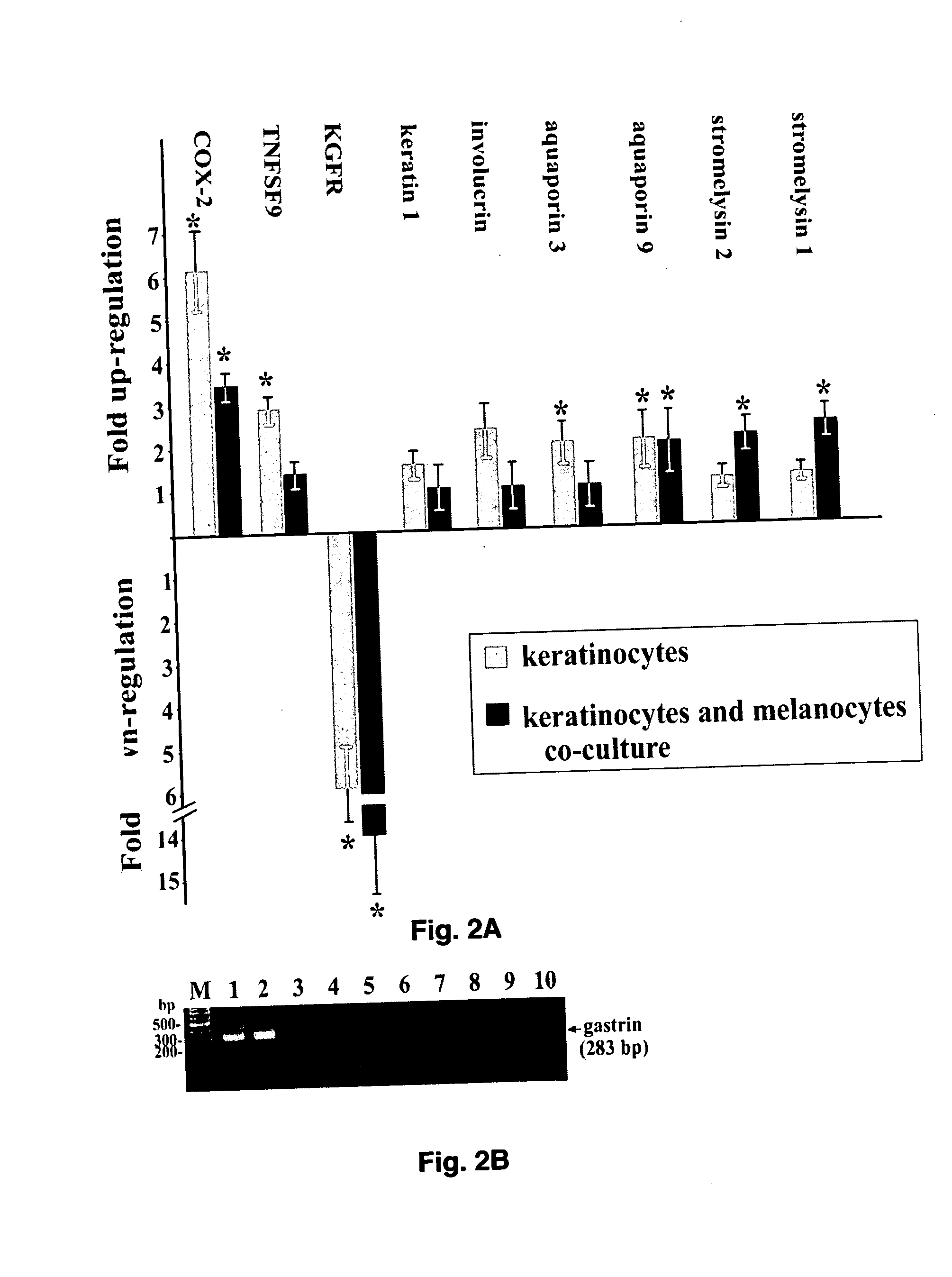Microarray for evaluation of stress-related genes in skin
a microarray and stress-related technology, applied in the field of molecular biology and genomics technology, can solve the problems of deficient development of microarray assays in the early stages of the field
- Summary
- Abstract
- Description
- Claims
- Application Information
AI Technical Summary
Benefits of technology
Problems solved by technology
Method used
Image
Examples
example 1
[0024] Human adult epidermal keratinocytes and melanocytes were purchased from Cascade Biologics and cultured according to the company's protocol (Cascade Bio, Portland, Oreg.). Melanocytes were grown in Medium 154 and keratinocytes in EpiLife medium supplemented with appropriate growth factors and antibiotics. For co-cultivation experiments, keratinocytes and melanocytes were mixed in the ratio 20:1 and incubated in Medium 154 supplemented with HKGS (Cascade Bio, Portland, Oreg.).
example 2
[0025] Ultraviolet irradiation of cells was performed as previously described (Pisarchik and Slominski, 2001). Briefly, cells were cultured in 75 cm2 flasks at 85% confluency. The flasks were placed on the UV transilluminator 2000 (BioRad) and irradiated with 50 mJ / cm2 UVB (Pisarchik and Slominski, 2001). Time of exposure, corresponding doses and UV spectrum had been established previously; after UV exposure (50 mJ / cm2) the morphology of the cells did not change significantly (Pisarchik and Slominski, 2001). Irradiated cells were further incubated in culture media for 4, 12 and 24 hours, detached and processed for RNA isolation.
example 3
Microarray Slides
[0026] Oligonucleotides for genes related to production and metabolism of hormones, neurotransmiters, neuropeptides, cytokines, biological modulators, growth factors, corresponding receptors and normal skin metabolism genes were designed (http: / / www.utmem.edu / pathology / molecular-endocrinology.htm). The location of the oligos for each gene was chosen according to the structure of the corresponding gene obtained from the GeneBank. Oligonucleotides were synthesized by Integrated DNA Technologies (Coralville, Iowa) and printed on superamine slides (TeleChem, Sunnyvale, Calif.) at the University of Tennessee Molecular Resource Center.
PUM
| Property | Measurement | Unit |
|---|---|---|
| stress | aaaaa | aaaaa |
| thermal stress | aaaaa | aaaaa |
| chemical stress | aaaaa | aaaaa |
Abstract
Description
Claims
Application Information
 Login to View More
Login to View More - R&D
- Intellectual Property
- Life Sciences
- Materials
- Tech Scout
- Unparalleled Data Quality
- Higher Quality Content
- 60% Fewer Hallucinations
Browse by: Latest US Patents, China's latest patents, Technical Efficacy Thesaurus, Application Domain, Technology Topic, Popular Technical Reports.
© 2025 PatSnap. All rights reserved.Legal|Privacy policy|Modern Slavery Act Transparency Statement|Sitemap|About US| Contact US: help@patsnap.com



